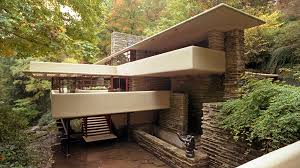Exploring the Timeless Beauty of Frank Lloyd Wright’s Iconic Buildings

The Iconic Frank Lloyd Wright Buildings: A Masterpiece of Architectural Design
Frank Lloyd Wright, an American architect known for his innovative and visionary designs, has left a lasting legacy in the world of architecture. His buildings are celebrated for their organic integration with the surrounding environment, use of natural materials, and distinctive geometric shapes.
One of Wright’s most famous buildings is the Fallingwater house in Pennsylvania. Built in 1935, Fallingwater is a stunning example of Wright’s philosophy of organic architecture. The house appears to float above a waterfall, seamlessly blending with its natural surroundings.
Another iconic Frank Lloyd Wright building is the Guggenheim Museum in New York City. Completed in 1959, the museum’s spiral design and skylight create a unique space for displaying art. The Guggenheim Museum stands as a testament to Wright’s ability to push the boundaries of architectural design.
Wright’s influence can also be seen in his Prairie School style homes, characterized by their horizontal lines, low-pitched roofs, and open floor plans. These homes emphasize harmony with nature and are designed to create a sense of unity between the interior and exterior spaces.
Frank Lloyd Wright’s buildings continue to inspire architects and designers around the world. His innovative approach to architecture has left an indelible mark on the built environment, showcasing the beauty of blending art with nature.
Whether you are exploring his residential masterpieces or visiting his iconic public buildings, experiencing a Frank Lloyd Wright building is truly a journey into the mind of a visionary architect.
5 Ways to Deepen Your Understanding of Frank Lloyd Wright’s Architectural Masterpieces
- Appreciate the unique organic architecture of Frank Lloyd Wright’s buildings.
- Learn about his use of natural materials like wood and stone in his designs.
- Explore the integration of indoor and outdoor spaces in Wright’s buildings.
- Study the innovative geometric shapes and patterns used in his architectural creations.
- Visit iconic Frank Lloyd Wright structures like Fallingwater or the Guggenheim Museum to experience his work firsthand.
Appreciate the unique organic architecture of Frank Lloyd Wright’s buildings.
When exploring Frank Lloyd Wright’s buildings, take a moment to appreciate the unique organic architecture that sets his work apart. Wright’s innovative designs seamlessly blend with their natural surroundings, creating a harmonious relationship between the built environment and nature. From the iconic Fallingwater house to the revolutionary Guggenheim Museum, each structure showcases Wright’s visionary approach to architecture, emphasizing the beauty of integrating art with the surrounding landscape. By appreciating the organic elements in Wright’s buildings, one can truly grasp the timeless elegance and ingenuity of his architectural masterpieces.
Learn about his use of natural materials like wood and stone in his designs.
Frank Lloyd Wright’s architectural brilliance shines through his masterful use of natural materials such as wood and stone in his designs. By incorporating these elements into his buildings, Wright seamlessly connected his structures to the surrounding environment, creating a harmonious blend between the man-made and the natural world. The warmth of wood and the strength of stone not only added aesthetic appeal to his creations but also contributed to their longevity and sustainability. Understanding Wright’s intentional use of these materials provides insight into his commitment to organic architecture and his belief in creating spaces that resonate with the beauty of nature.
Explore the integration of indoor and outdoor spaces in Wright’s buildings.
Discovering the seamless integration of indoor and outdoor spaces in Frank Lloyd Wright’s buildings is a captivating experience. Wright’s architectural genius shines through in his ability to blur the boundaries between interior and exterior, creating a harmonious flow that connects the built environment with nature. Whether it’s the organic design of Fallingwater or the Prairie School homes with their open floor plans, exploring how Wright masterfully incorporates outdoor elements into his structures reveals a deep appreciation for the beauty of natural surroundings within architectural design.
Study the innovative geometric shapes and patterns used in his architectural creations.
Studying the innovative geometric shapes and patterns used in Frank Lloyd Wright’s architectural creations offers a fascinating glimpse into his visionary approach to design. Wright’s buildings are renowned for their unique integration of geometric forms that harmonize with nature and create visually striking structures. By examining the intricate details of his work, one can appreciate how Wright skillfully combined geometry with organic elements to redefine the boundaries of architectural expression. Delving into these geometric shapes and patterns not only reveals the mastery of his craft but also inspires a deeper understanding of the artistry behind his enduring legacy in the world of architecture.
Visit iconic Frank Lloyd Wright structures like Fallingwater or the Guggenheim Museum to experience his work firsthand.
To truly appreciate the genius of Frank Lloyd Wright’s architectural vision, it is highly recommended to visit iconic structures such as Fallingwater in Pennsylvania or the Guggenheim Museum in New York City. These masterpieces offer a firsthand experience of Wright’s innovative design principles, organic integration with nature, and unique spatial concepts. Walking through these buildings allows one to immerse themselves in the genius of one of the most influential architects of the 20th century, gaining a deeper understanding and appreciation for his groundbreaking work.
